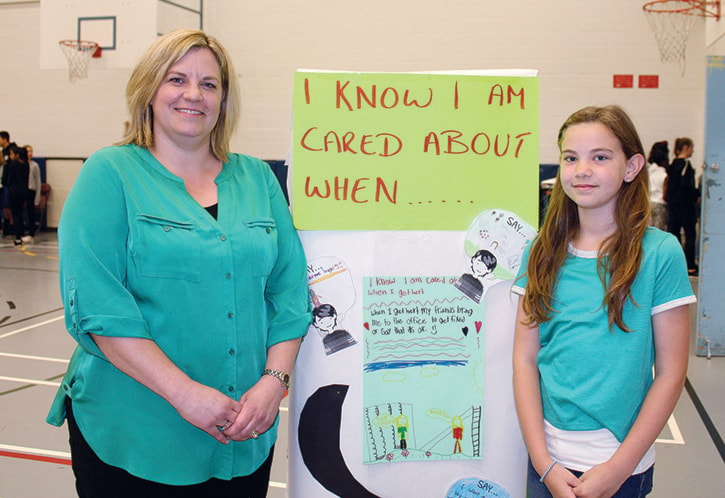During a recent presentation in front of her Chantrell Creek Elementary peers last month, Abigail Barron was confident as she spoke about anxiety.
“Anxiety is normal,” the 10-year-old stated. “Some anxiety, but not too much.”
And while it wasn’t obvious from watching her speak, Abigail knows all too well what too much anxiety can do – it’s what took her away from competitive dancing.
“Before I quit dance, I would get very anxious when I thought about competing,” the Grade 5 student said. “Anxiety made me feel like I couldn’t dance anymore.”
Abigail shared her experience with the disorder as part of efforts by the White Rock-South Surrey Child and Youth Mental Health and Substance Use Local Action Team to raise awareness among elementary students around mental health. A speaker series last fall featured forums at Elgin Park and Earl Marriott secondaries.
Abigail and her mom, Dr. Julie Milligan – a local pediatrician on the CYMHSU team who was also diagnosed with an anxiety disorder – approached Abigail’s school with a proposal to help celebrate Child and Youth Mental Health Day, which was marked nationwide on May 7.
The mother and daughter had three goals: to teach the students what anxiety is, help them learn how to recognize it in their own bodies and share how to best support someone who has anxiety.
During their May 19 presentation, they used the analogy of a caveman encountering a saber tooth tiger to explain the body’s fight-or-flight response to anxiety. That response, Milligan told the students, “has been around forever.”
“It’s what keeps us safe,” she said.
Good anxiety, she said, is “just enough to keep you from eating a food you’re allergic to, but not so much that you’re afraid to eat anything at all.”
Abigail’s anxiety developed in Grade 3, after her grandmother died from cancer. Abigail had always been a worrier, Milligan told Peace Arch News, but the grief contributed to it getting out of hand and affecting “every aspect of our lives.”
Her performance anxiety became such that Abigail decided to take a leave from competitive dancing. Her recent venture back to recreational dance was a proud moment for her parents.
“We are very proud of her return and the fact that she can admit that it was too much for her at the time,” Milligan said by email.
Abigail told her peers during the presentation that bad anxiety can make it hard to take tests at school and make friends; and it can make you grumpy. Anyone feeling that way should talk to someone, she said, be it a counsellor, parent, teacher or friend.
She also offered suggestions for those wondering how they can help someone who has anxiety: be a good friend, be kind, listen, be supportive and be positive.
Milligan told PAN it would be nice if anxiety was seen the same as other non-mental illnesses, “but the fact is in many scenarios, it isn’t.”
“People have often expressed dismay that Abigail suffers from an anxiety disorder because she functions well despite it,” she said.
Dr. Rummy Dosanjh told PAN last fall that statistics show 22.7 per cent of local youth are affected by anxiety disorders. Signs can include an abrupt change in behaviour, withdrawal from activities, panic attacks and even physical pain.
For Abigail and Milligan, creating awareness is critical, and Milligan said she is proud of her daughter’s willingness to share her struggles to achieve that goal.
